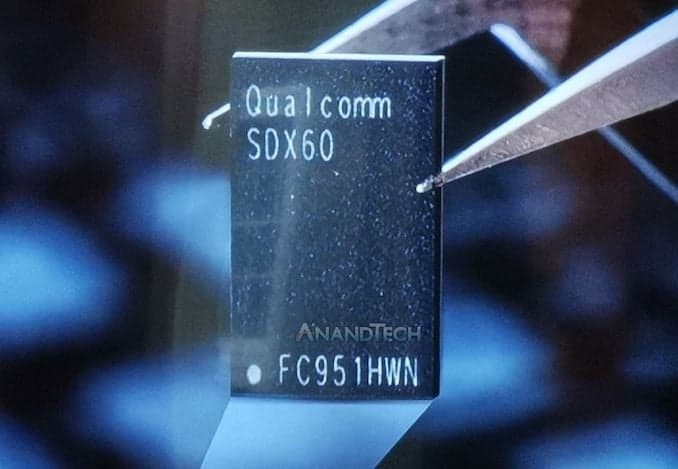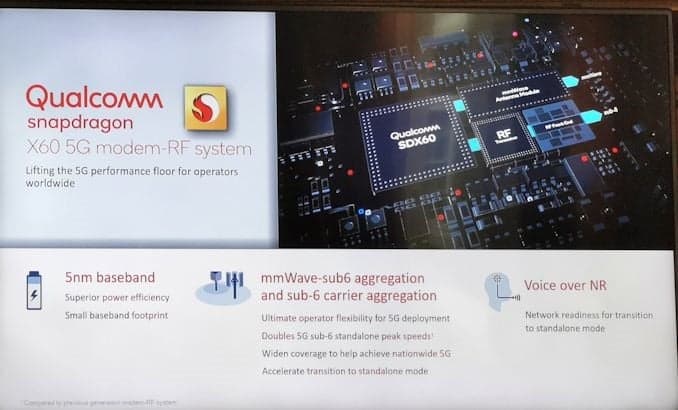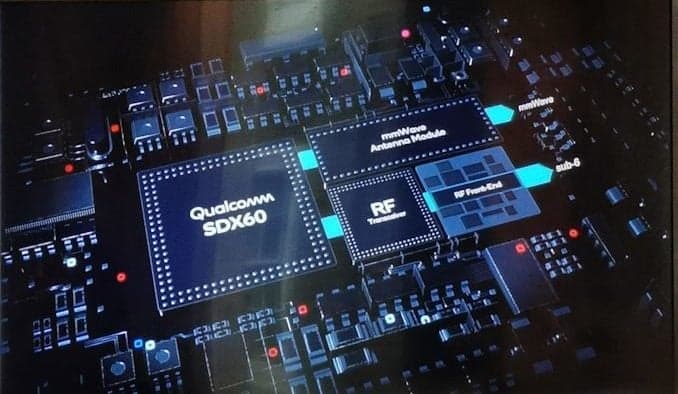Qualcomm has developed two 5G modems: Snapdragon X50 and Snapdragon X55. Today, Qualcomm officially launched the third-generation 5G modem Snapdragon X60, which is an advanced product that can be used in smartphones, industry, and commerce. It is also the world’s first 5nm 5G baseband and the first chip using a 5nm process.
The Snapdragon X60 is based on a 5-nanometer process and supports carrier aggregation between Sub-6 and mmWave. It has a maximum download speed of 7.5Gbps and an upload speed of 3Gbps and supports 5G VoNR. Among them, the Snapdragon X60 supports 5G FDD-TDD carrier aggregation below 6GHz, 5G TDD-TDD carrier aggregation below 6GHz, and millimeter-wave below-6GHz aggregation. Compared with the X55 baseband, the X60 successfully doubles the peak rate of the 5G independent networking due to the carrier aggregation in the frequency band below 6GHz using the independent networking mode.

In the world’s two integrated 5G baseband flagship 5G SoCs, the Dimensity 1000 can reach a downlink rate of 4.7Gbps and an uplink rate of 2.5Gbps. Also, the Kirin 990 chip can reach a downlink rate of 2.3Gbps and an uplink of 1.25Gbps rate.
Gizchina News of the week
The X60 modem uses a new mmWave antenna module, the third-generation millimeter-wave module “QTM535”. It is smaller in size but more powerful than QTM525, and supports global millimeter-wave bands such as 26GHz, 28GHz, and 39GHz. The new module can bring users faster network speeds and lower latency. As you understand, it is critical for future IoT scenarios and multiplayer gaming scenarios.

In addition to modems and millimeter-wave antennas, the Snapdragon X60 also offers complete RF front-ends below 6 GHz. Last year, there were 150 types of devices using X50 / X55 modems. All of them used Qualcomm’s RF front-end solutions.
Also Read: Samsung Wins Qualcomm Snapdragon X60 5G Baseband Foundry Order
It took about two years from Qualcomm to design the first-generation X50. The X55 speeded up the process, shortened the time to market and finally introduced consumer devices to the end of 2019 and 2020. It is worth noting that TSMC has not yet mass-produced 5nm process chips. (It will be implemented soon.) Qualcomm plans to sample the Snapdragon X60 and QTM535 in the first quarter of 2020. Smartphones equipped with X60 baseband and RF system will be available in 2021.





